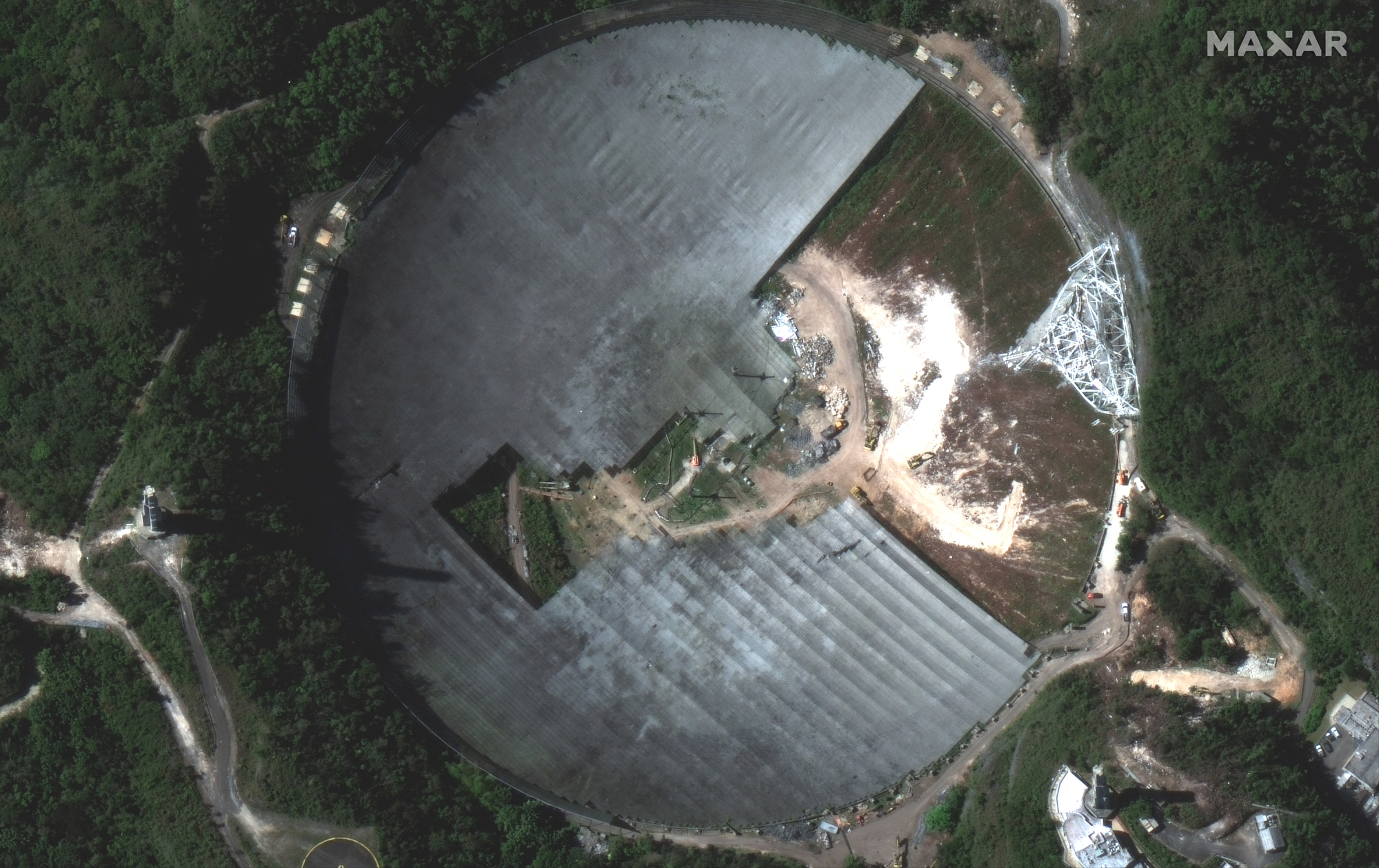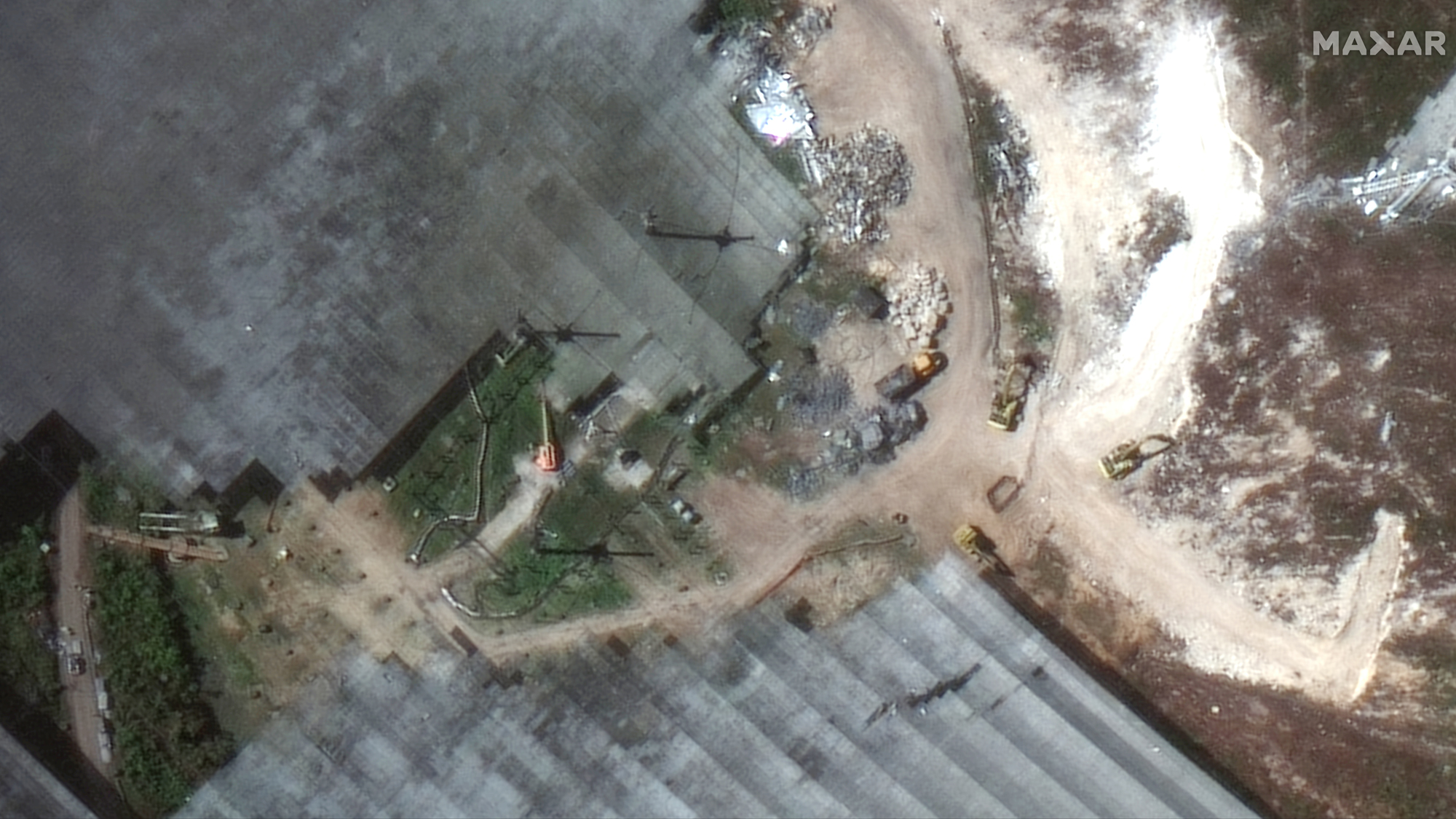Cleanup of Arecibo Observatory's collapsed radio telescope seen from space

The sad work of dismantling the remains of the Arecibo Observatory in Puerto Rico is underway.
Fresh satellite images from Maxar Technologies from Feb. 23 show work crews removing part of the structure and clearing the land for safety reasons, after the telescope collapsed Dec. 1, 2020.
The National Science Foundation (which stewarded the telescope since the 1970s) had no updates about Arecibo's status recently on Twitter or on its press releases. It announced the decommissioning of the famed observatory back in November, however, due to hurricane and cable damage deemed too dangerous to repair. The new pictures are therefore no surprise.
Related: Astronomers are still reeling from the loss of iconic Arecibo radio telescope
The collapse, documented in pictures and video, saw the 900-ton platform that hung above the radio dish suddenly falling 450 feet (140 meters) into the structure below at 8 a.m. local time. A preliminary investigation is ongoing for the cause amid the cleanup; a first update Jan. 21 from NSF suggested manufacturing error in the cables may have contributed to the collapse.
"We at NSF are extremely grateful that the safety zones were adequate and that nobody was physically hurt," Ashley Zauderer, the program director for the Arecibo Observatory at the NSF, said during a virtual town hall event held separately Jan. 11 at the 237th conference of the American Astronomical Society.
"I say 'physically hurt' because we do want to clearly communicate that we understand that this was a very traumatic event, impacting a lot of people," Zauderer added. "There is a lot of hurt."
Breaking space news, the latest updates on rocket launches, skywatching events and more!

The telescope's astronomical achievements are vast, but include scanning asteroids that came close to Earth, examining exoplanets and once sending a message to extraterrestrials in 1974. The public was also familiar with Arecibo's work through sci-fi films in the 1990s such as "Goldeneye" of the James Bond franchise, and the alien-focused "Contact" that starred a young Matthew McConaughey decades before his more famous space flick "Interstellar" (2014).
Arecibo's location in Puerto Rico brought tourism and scientific employment to the island associated with the telescope's work; how to secure that for the future is still being discussed. A recent editorial in Astronomy magazine suggested selling off pieces of Arecibo (in the context of a growing, worldwide space memorabilia market) to contribute to a fund for education and outreach at the former facility.
Follow Elizabeth Howell on Twitter @howellspace. Follow us on Twitter @Spacedotcom and on Facebook.

Elizabeth Howell (she/her), Ph.D., was a staff writer in the spaceflight channel between 2022 and 2024 specializing in Canadian space news. She was contributing writer for Space.com for 10 years from 2012 to 2024. Elizabeth's reporting includes multiple exclusives with the White House, leading world coverage about a lost-and-found space tomato on the International Space Station, witnessing five human spaceflight launches on two continents, flying parabolic, working inside a spacesuit, and participating in a simulated Mars mission. Her latest book, "Why Am I Taller?" (ECW Press, 2022) is co-written with astronaut Dave Williams.
